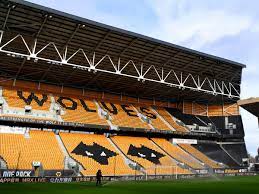By David Owen
March 20 – Chinese-owned Wolverhampton Wanderers have joined the general plunge into the red by Premier League clubs for the covid-impacted 2019-20 financial year.
The famous old Midlands outfit has posted a pre-tax loss of £40 million for the year to May 31. This compares with a £20 million profit achieved in 2018-19.
The club – which marked its first European campaign in nearly four decades by progressing as far as the quarter-finals of the Europa League – sought to underline, however, that had broadcast revenues from suspended match-days not been deferred into the present financial year, it would have achieved “a small profit”.
According to its estimate of the pandemic’s impact, broadcast revenue would have been as much as £53.4 million higher with the income deferred and foregone. The club’s covid-adjusted profit is assessed at £17.6 million, while revenue permanently lost is put at £11.6 million.
Turnover for the corporate entity WW (1990) Limited was actually down almost £40 million at £132.6 million. Even so, the club will be one of few in the Premier League in 2019-20 to be able to say it increased gate receipts year-on-year.
It also achieved the noteworthy feat for a now highly competitive English top-flight team of keeping staff costs below £100 million: they edged up by less than £3 million to £94.7 million.
The consolidated statement of cash flows appears to indicate, however, that Wolves ran up a cash deficit on player transfers of more than £100 million during the year. Player purchases are put at £118.4 million; player sales at just £14.9 million. This picture will almost certainly change over the present 12 months, with Diogo Jota’s successful move to Liverpool occurring too late for these accounts. A note on post balance-sheet events states that since the year-end, “the group has recognised a profit on sales of player registrations of £60.3 million”.
At May 31, the club is shown as having just under £25 million of bank loans, versus zero a year earlier. The amount owed to owners Fosun was actually down slightly, at £127.5 million, versus £131 million. Since the year-end, financing facilities are said to have been increased from £50 million to £75 million. “These facilities now comprise a £60 million term loan and a £15 million revolving credit facility.”
Contact the writer of this story at moc.l1745123989labto1745123989ofdlr1745123989owedi1745123989sni@n1745123989ewo.d1745123989ivad1745123989

